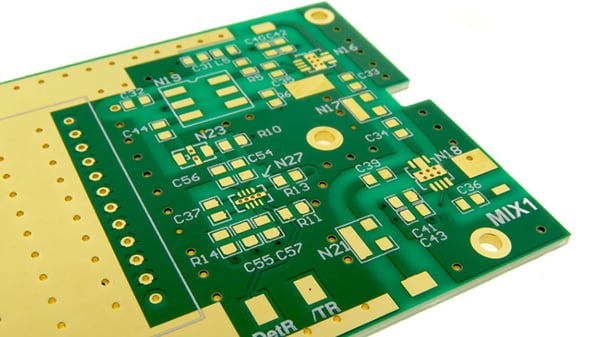Fr4 for example has a higher dissipation factor than high frequency laminates meaning fr4 laminates can result in higher insertion losses as signal frequencies increase.
Rf pcb laminate.
Rf printed circuit fabrication with rogers material rogers rt duroid rt6020 rogers rt duroid rt6010 rogers ro4350b rogers ro4000 rogers ultralam 2000 rogers ultralam 3000.
The selection of microwave rf pcb laminate should consider its dielectric properties first but must also consider the types and thickness of surface copper foil environmental adaptability processability factors as well as cost problem.
Rs 10 000 moq get latest price.
When designing pcb circuits at microwave frequencies the key characteristics that define circuit laminate performance for microwave rf printed circuit boards pcbs include dielectric constant dk dissipation factor df coefficient of thermal expansion cte thermal coefficient of dielectric constant tcdk and thermal conductivity.
Rf microwave pcb laminate material.
Here are a few things to consider that ensure your design is efficient and minimizes the risk of failures signal disruptions and other intrusions.
Laminate properties the properties of a pcb laminate can have a significant effect on the functionality of an rf or microwave pcb.
Currently the most commonly used of the copper foil thickness is 35 μm and 18μm.
Rf and microwave pcb with high frequency laminates can be difficult to design because of the sensitivity of the signals especially compared to other digital signals.

